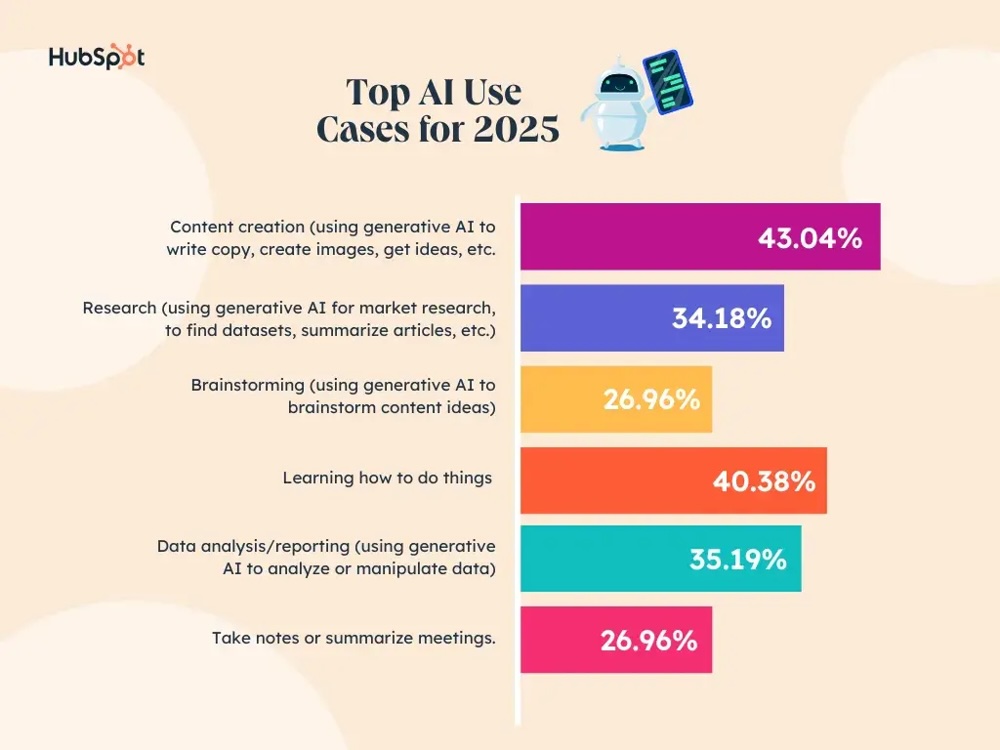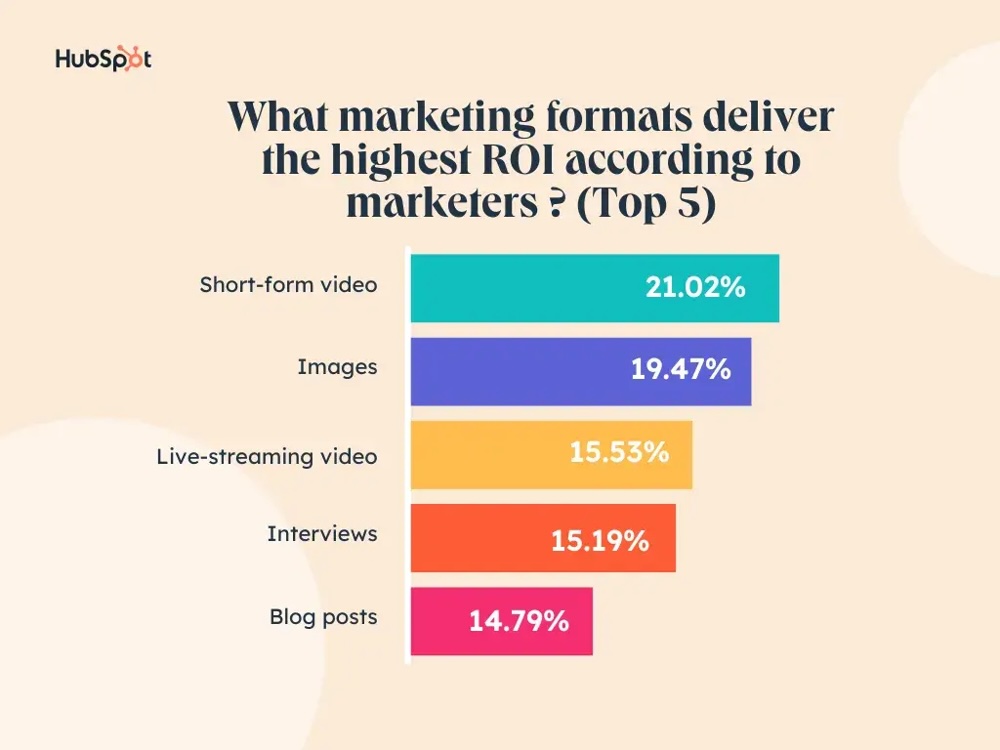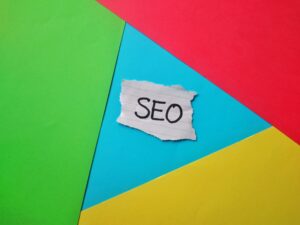The Top 8 Marketing Trends Defining 2025
Marketing in 2025 is being shaped by rapid technological advancements, shifting consumer behaviors, and a global business environment that demands both agility and authenticity. From the rise of generative AI to the growing importance of brand values, CMOs and marketing leaders are navigating a landscape that is as challenging as it is exciting.
1. Generative AI and Automation Redefine Marketing
The integration of artificial intelligence into marketing has accelerated dramatically. Marketers have moved beyond experimentation to making AI an everyday tool for efficiency and creativity. A recent HubSpot survey found content creation (43%) and research (34%) are the top AI use cases heading into 2025, followed by data analysis and brainstorming. AI is helping teams produce more content, repurpose assets, and derive insights faster than ever.

Figure: A HubSpot survey of global marketers shows content creation (43%) and research (34%) as the leading AI use cases heading into 2025. AI is increasingly used to generate copy, images, video scripts, and more.
Crucially, AI’s role in marketing is expanding from content generation to workflow automation, data-driven decision making, and strategy. “Marketers have been scratching the surface of AI, but so far it’s been mostly for content generation. In 2025, we expect to see marketers make the leap to using AI for creative ideation, data-driven decision-making, workflow automation, and strategic brainstorming,” says Dane Vahey, OpenAI’s Head of Strategic Marketing. Deloitte Digital also predicts that generative AI could boost enterprise software revenues by $10 billion as it becomes embedded in business tools.
Despite the enthusiasm, many marketing teams are still climbing the learning curve. Only about 47% of marketers say they have a clear understanding of how to use AI in their strategy, and a similar share feel unsure how to measure AI’s impact. Briana Rogers, VP of Marketing at Miro, advises that marketers will need to experiment broadly: “The space is moving so quickly and we need to experiment with everything… from well-established use cases – like leveraging machine learning to improve ad buying – to newer spaces, like… assisting in creative development, and building full customer campaigns powered by AI.” As AI automates routine tasks, marketing leaders must retrain teams for higher-level creative and strategic work while emphasizing the human elements that AI cannot replace.
Ethical and effective use of AI is another concern. “Gen Z is sounding the alarm: they’re more concerned than any other demographic about whether their organizations can trust generative AI vendors to uphold responsible AI practices,” warns Dr. Rebecca Hinds, Head of Asana’s Work Innovation Lab. Transparency and governance around AI will be critical to maintain trust. Ultimately, brands that leverage AI as an assistant – not a replacement – will have a competitive edge.
2. First-Party Data and Privacy-First Strategies
With the demise of third-party cookies looming, 2025 will be the year privacy-first marketing takes center stage. Although Google has delayed its phase-out of third-party cookies in Chrome (which commands over 65% of global browser traffic), smart marketers aren’t waiting. “It’s the longest death scene in history: the demise of the third-party browser cookie… Advertisers have already moved on,” quips marketing analyst Martin Kihn.
This makes first-party data – the information customers share directly with brands – more valuable than ever. Companies are investing in strategies to collect, analyze, and activate their own data with user consent. Deloitte emphasizes the need to “embrace privacy-friendly data strategies to cultivate trust and customer loyalty, turning direct customer insights into a valuable asset.” According to Deloitte’s research, 70% of marketing leaders are budgeting for data privacy and first-party data initiatives, with 56% actively investing in these areas.
Stricter data privacy laws (from GDPR to California’s CPRA) and the deprecation of tracking technologies mean marketers must prioritize consent and data security. “Gathering usable customer data increasingly requires consent,” notes WARC’s Aditya Kishore. Brands that get this right will secure a competitive advantage by delivering more personalized marketing while reducing vulnerability to platform changes.
3. Hyper-Personalization and Customer Experience as King
Personalization has evolved from a buzzword to a baseline expectation in 2025. Today’s customers demand to be understood and treated as individuals, rewarding brands that deliver tailored experiences. A Deloitte study found that 75% of consumers are more likely to purchase from brands that provide personalized content and experiences. Furthermore, companies that lead in personalization are 48% more likely to exceed revenue goals.
Hyper-personalization means using customer data and AI to tailor every touchpoint – from product recommendations and emails to communication timing – for each individual. “Your best customers are more important than ever,” notes Martin Kihn, who observes that many brands now generate a disproportionate share of revenue from a small fraction of loyal buyers. This trend has given rise to “super loyalty” programs and VIP experiences that reward top customers.
At the same time, excellent customer experience (CX) is crucial. According to WARC’s Marketer’s Toolkit, an estimated $3.7 trillion in revenue is at risk globally if consumers switch brands due to poor experiences. Closing the “experience gap” and delivering seamless omnichannel journeys – from the first ad impression to post-purchase support – is now a top priority.
4. Omnichannel Commerce and Seamless Journeys
The traditional marketing funnel is evolving into a continuous, anywhere-anytime journey. In 2025, consumers will expect seamless omnichannel experiences that effortlessly bridge social media, websites, physical stores, and more. Deloitte describes this as “the convergence of social media and e-commerce,” urging brands to create seamless shopping experiences on the platforms where their audiences spend the most time.
Shoppable media is reducing the path to purchase. “The marketing funnel (finally) disappears,” observes Martin Kihn, noting that consumers can go “from awareness to checkout in 90 seconds” after seeing a tailored ad. Brands are increasingly using shoppable posts, one-click checkouts, and integrated payment options to convert engagement into instant sales. Retail media networks from companies like Amazon, Walmart, and Target further drive this trend by advertising directly at the digital point of sale.
True omnichannel integration requires cross-functional collaboration between marketing, sales, and e-commerce teams. As Deloitte explains, stitching together digital and physical touchpoints creates a unified view of the customer, enabling brands to deliver consistent and valuable experiences.
5. Short-Form Video and Visual Content Dominance
Short-form video is set to become a marketing expectation in 2025. Visual content – particularly concise, engaging videos – delivers some of the highest ROI among content types. HubSpot’s 2024 data shows that short-form video, images, and live-streaming are among the most effective formats, reflecting the native styles of popular platforms like TikTok, Instagram, and YouTube.

Figure: A HubSpot survey shows that short-form video ranks #1 (21% of marketers cited it) for ROI, followed by image content (19%) and live-stream video (15%).
This format is effective because it captures attention quickly. “Short-form video, images, and user-generated content resonate because they humanize brands and foster a deeper connection with audiences,” explains Ashley Quintana, CEO at BridgeRev. In 2025, marketers are increasing investments in visual platforms and learning to repurpose longer content into snackable videos and infographics.
User-generated content (UGC) and influencer content also play key roles in delivering authentic, relatable visuals that resonate with today’s audiences.
6. Influencer Marketing Grows Up: The Creator Economy and Micro-Influence
Influencer marketing is evolving into a more mature and strategic channel in 2025. The rise of micro-influencers and niche creators – often with fewer than 100k followers – is yielding better engagement and ROI than traditional celebrity endorsements. “In 2025, marketers are seeing more success with small influencers… And I’m not surprised,” notes a HubSpot expert, emphasizing that smaller creators often build deeper trust.
This evolution dovetails with the broader creator economy. According to Goldman Sachs, the global creator economy reached $250 billion in 2024 and could grow to $480 billion by 2027. Kantar research further shows that creator-led content significantly boosts brand distinctiveness, proving that partnering with authentic creators can amplify a brand’s message in a way traditional ads cannot.
Long-term partnerships and integrated strategies – rather than one-off influencer posts – are emerging as best practices, ensuring that influencer collaborations drive genuine engagement and lasting impact.
7. Brand Purpose, Authenticity, and Sustainability
Consumers in 2025 are looking beyond product features to the values and purpose behind a brand. “In 2025, consumers aren’t just choosing products or services — they’re aligning themselves with brands that resonate with their beliefs and reflect their values,” explains Ashley Quintana. This shift means brands must clearly communicate their purpose and back it up with action.
Sustainability is a key element. An overwhelming 93% of consumers worldwide want to live a more sustainable lifestyle, and they expect brands to help make that possible. Nearly 94% of global marketers believe their sustainability agendas need to be more ambitious. For brands, this means highlighting eco-friendly initiatives, sustainable product features, and social impact programs – all while avoiding greenwashing.
Authenticity also requires embracing inclusivity and diversity. Nearly 8 in 10 consumers say a brand’s diversity and inclusion efforts influence their purchasing decisions. As Kantar notes, in 2025, brands must embrace inclusivity as a core value rather than a token effort.
8. Upskilling Teams and Marketing Agility
Finally, building future-ready marketing teams is essential. With rapid technological changes and strategic shifts, the skills that once drove success may no longer be enough in 2025. Deloitte urges CMOs to “supercharge teams with future-ready skills” and invest in cutting-edge tools and data expertise.
Marketers need to bridge the skills gap—currently, 36% feel their teams lack the expertise to fully leverage generative AI—by training current staff and hiring new talent such as data scientists and marketing technologists. In addition, rethinking team structure and collaboration is key. Agile “pods” or marketing sprints, inspired by software development, are helping teams pivot quickly and work more efficiently.
Ultimately, fostering a culture of continuous learning and adaptability will ensure that marketing remains a driver of innovation and growth in 2025.
Sources




